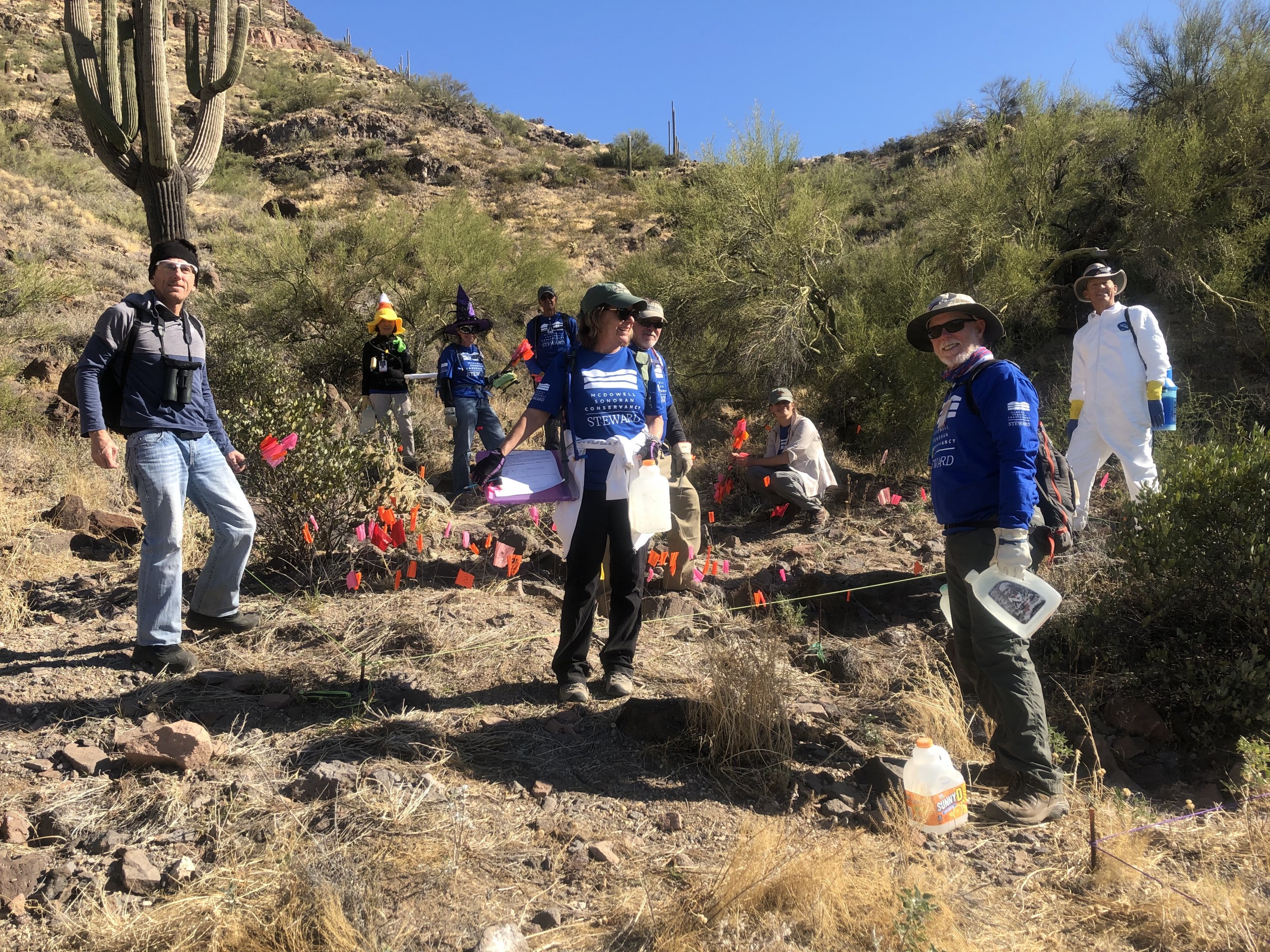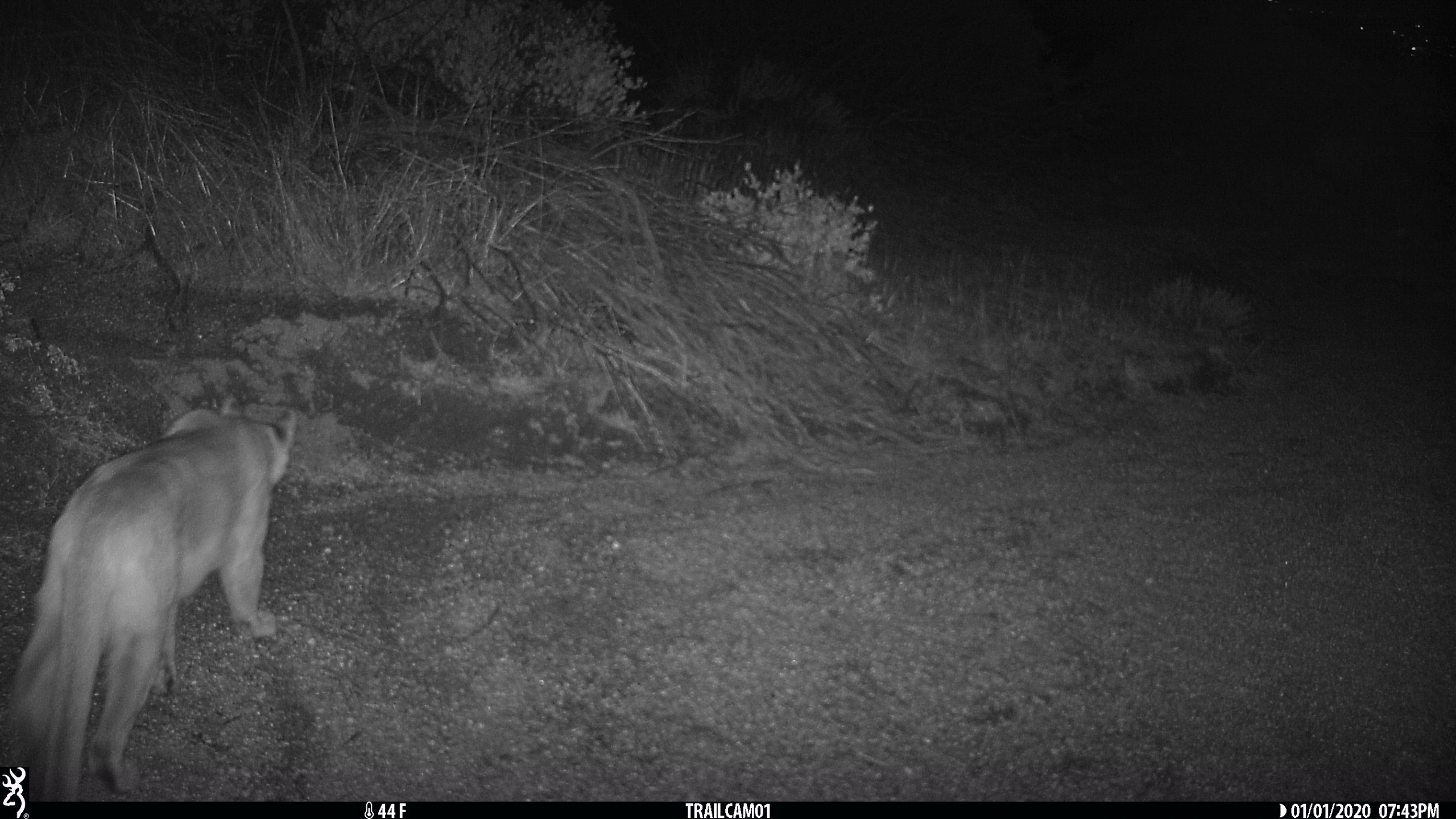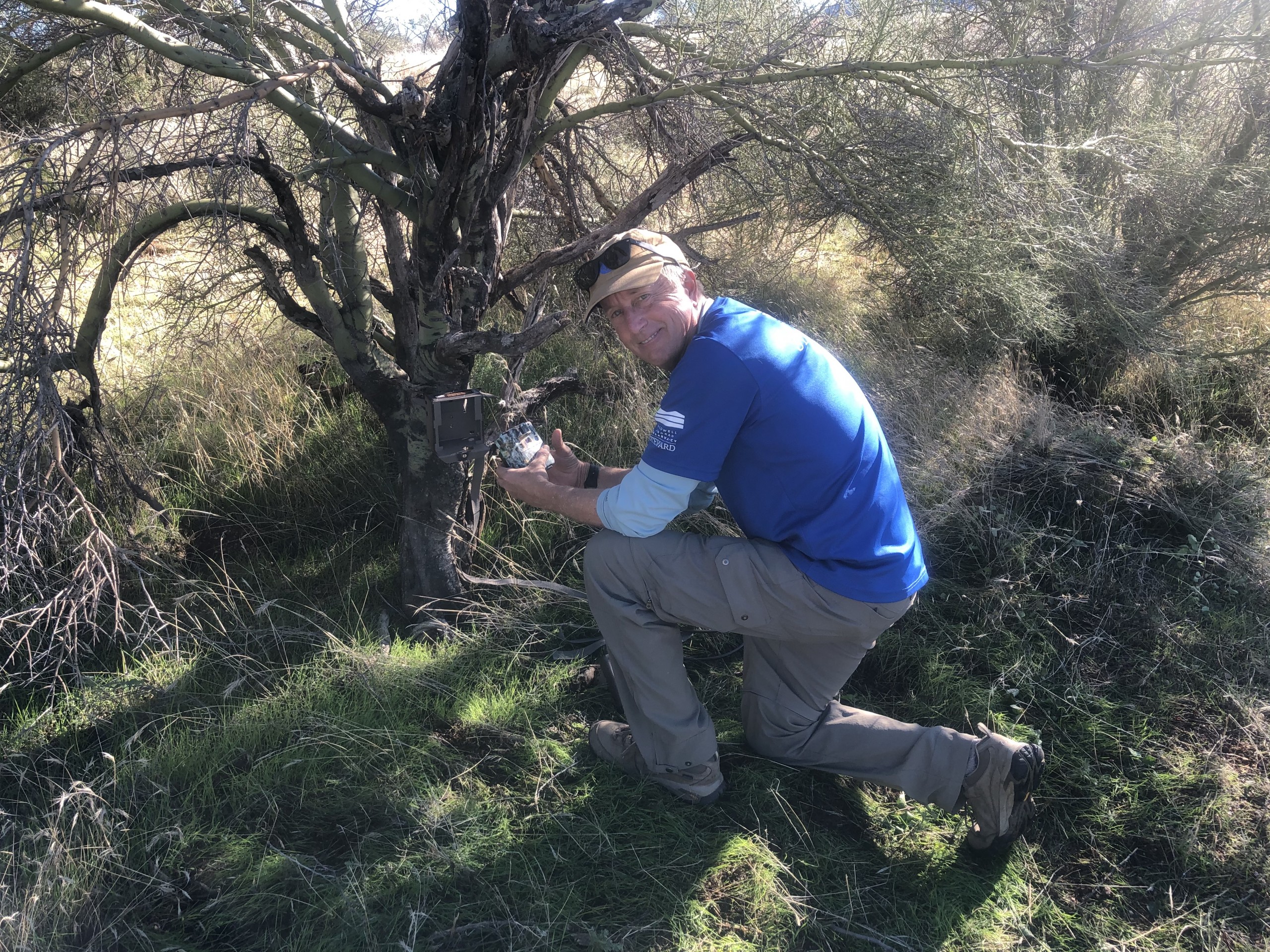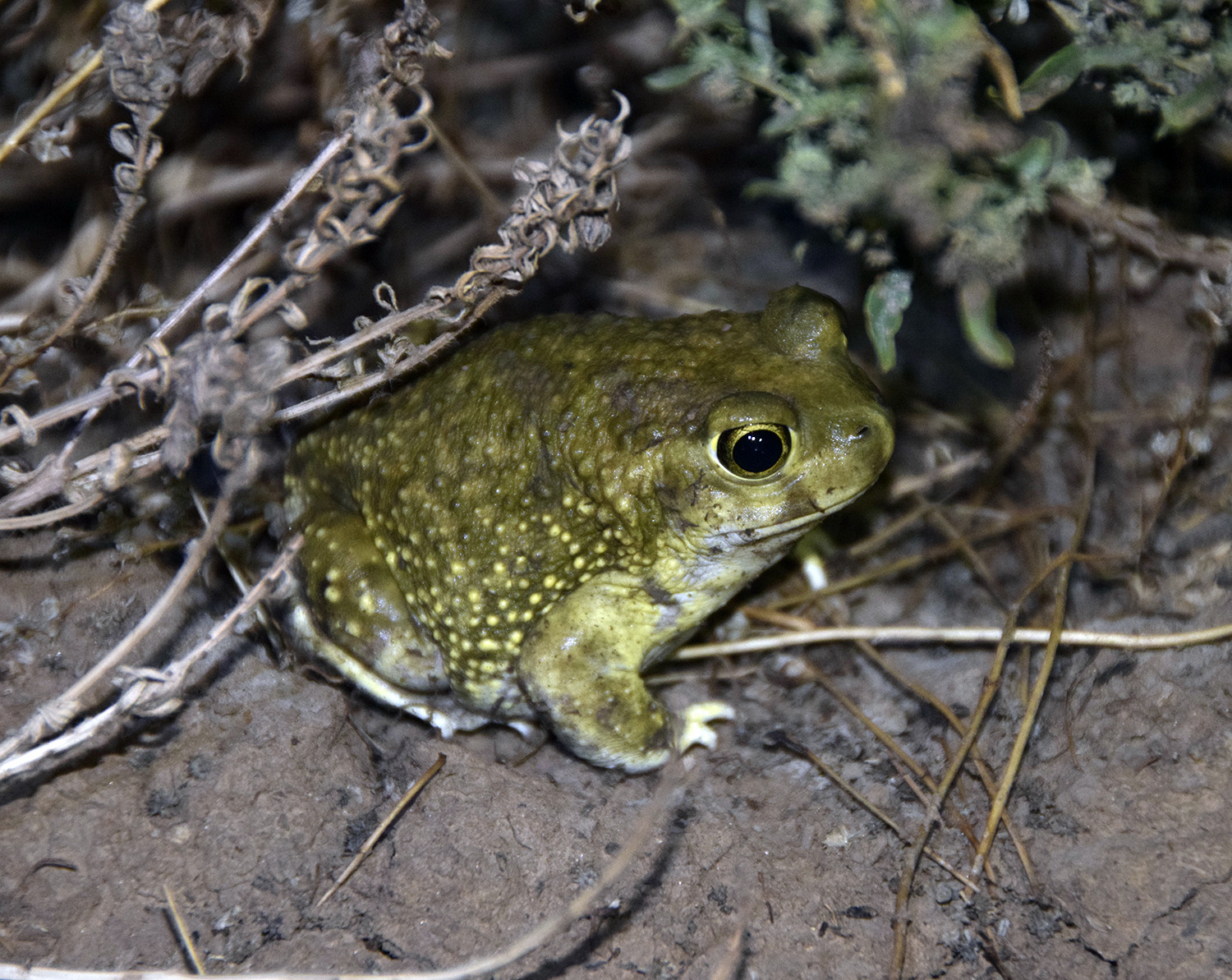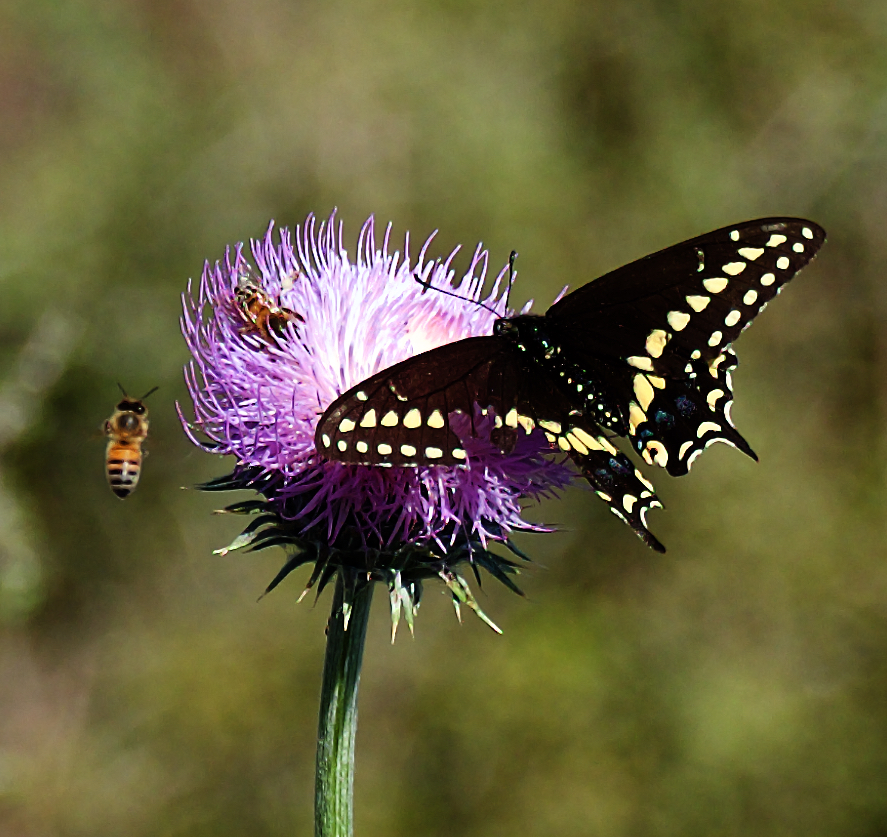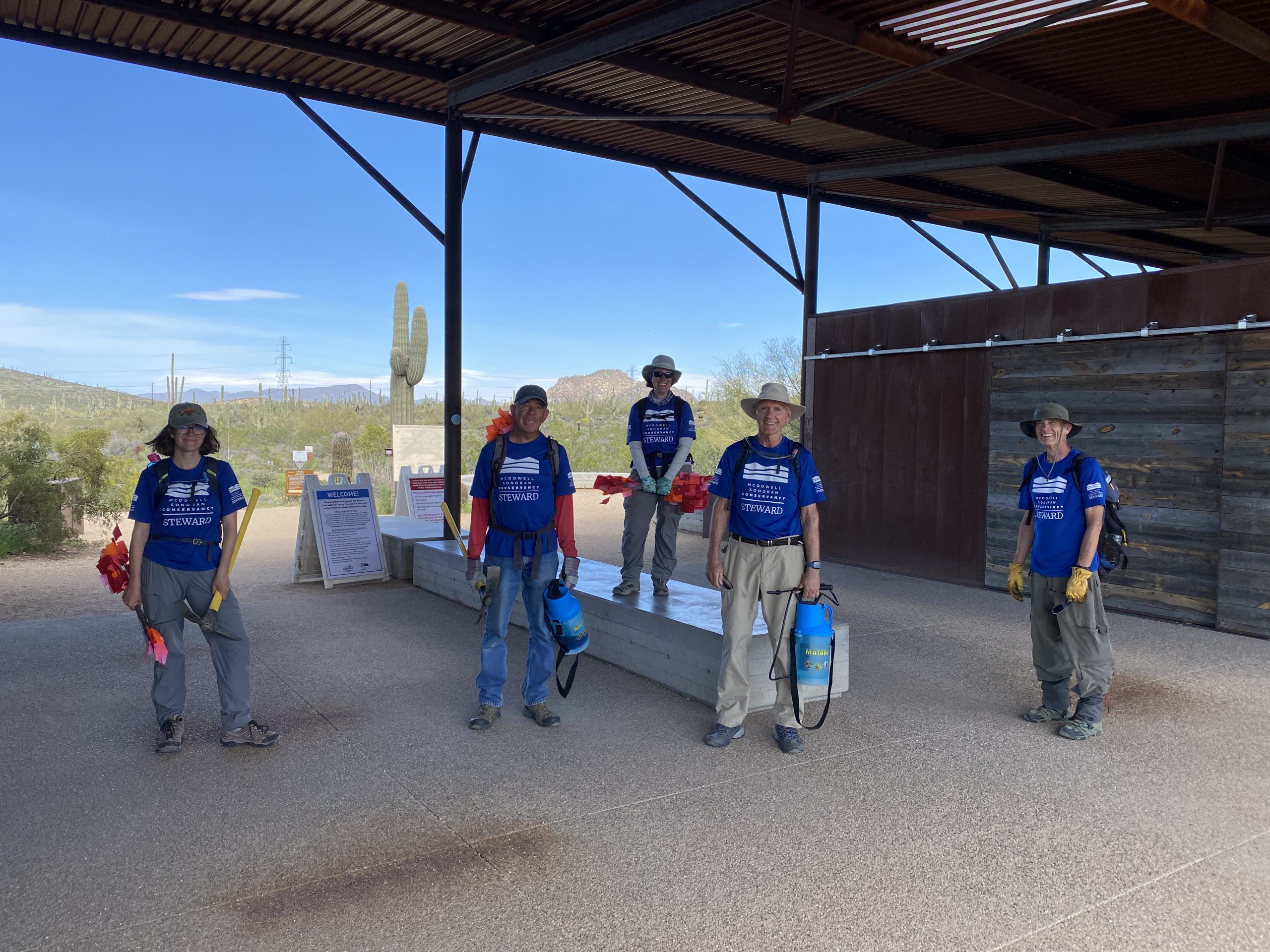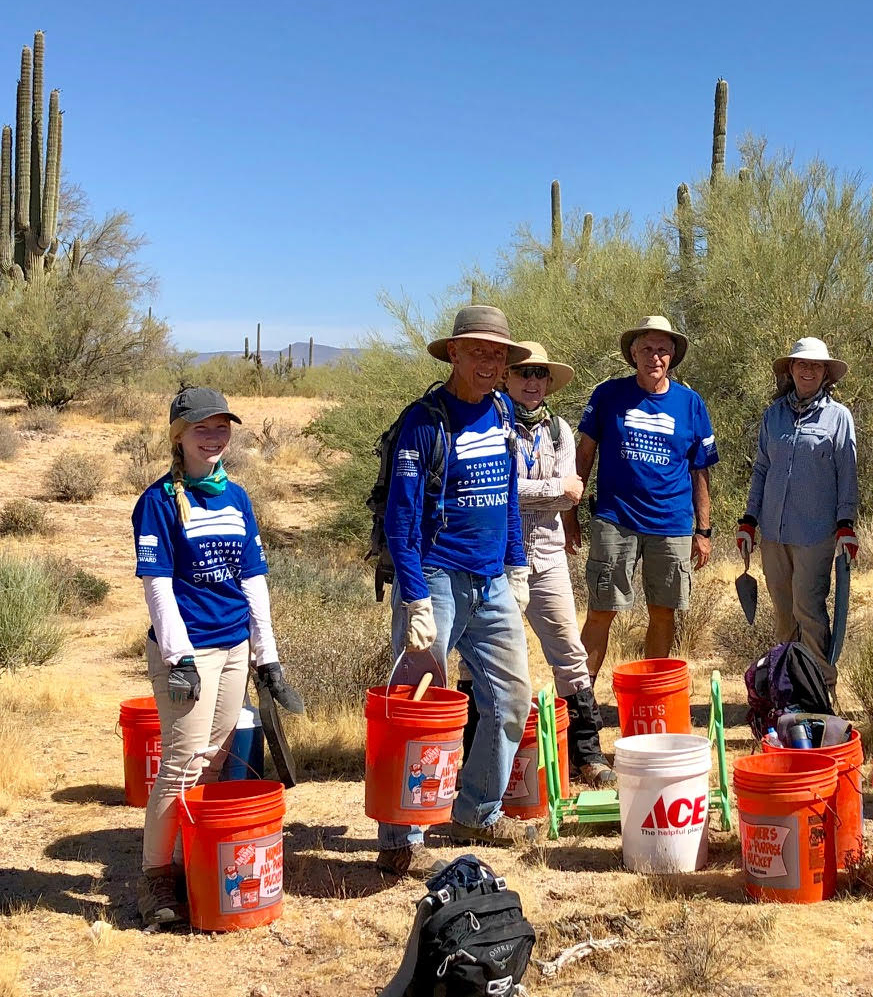Despite recent challenges caused by the global pandemic, the 2019–2020 season was filled with
incredible successes. The McDowell Sonoran Conservancy’s Parsons Field Institute and Citizen
Science Program achieved so much over the past year, from continuing ongoing projects to
starting exciting new ones, from engaging volunteers to collaborating with new partners. We are
thrilled to share some of these accomplishments!
Long-Term Monitoring
One of the priorities of the Parsons Field Institute is to understand how climate change and urban
stressors affect natural resources in Scottsdale’s McDowell Sonoran Preserve. To accomplish this,
we conduct long-term monitoring of animal and plant species. Over the past year, we conducted
regular surveys for amphibians, ground-dwelling arthropods, bats, birds, and butterflies, plus
weekly observations of plant phenology. These data help us better understand natural fluctuations
in populations and human-caused effects, which then feeds into management decisions to protect
these resources. To broaden our monitoring and understanding of the Preserve, we added a couple
of new twists to some projects this year.
Arthropod, bird, and butterfly surveys continued without substantial changes from previous years.
This was our fifth year of arthropod monitoring, and we have collected more than 16,000
specimens to date. Derek Uhey, a PhD student at Northern Arizona University, is currently working
on analyzing this mountain of data. Bird surveys are conducted three times a year at nine sites
across the Preserve, plus a nocturnal survey at two sites. In addition, we host regular bird walks
and other events to engage people of all experience levels in birding fun. Butterfly surveys are
done at six sites across the Preserve twice a year. Our Fall 2019 count revealed fewer butterflies
than average, likely due to low monsoon precipitation, but our Spring 2020 count was back to
normal following the winter rains.
To better understand habitat changes and resource availability, stewards make weekly
observations of plant phenophases at three sites in the Preserve. By determining when plants go
through different stages, such as flowering or fruiting, we can determine how our changing
climate is affecting these species and species that depend on them. Over the past year, we made
more than 30,000 observations! We also added our first animal to our phenology project: the
white-winged dove, which is a pollinator and seed-disperser of saguaros. Over time, we will be
able to determine if these migratory doves are in town at the right time for the saguaros.
We matched up phenology with some of our other projects, too. Over the past several years, we
have been conducting summer-time bat emergence counts at a mine on the Preserve. This year,
we moved those to once a month, giving us a year-long view of trends in this population. We also
attempted a phenology project with amphibians at a site in the Preserve. By doing weekly
observations, we hoped to catch emergence, breeding, hatching, and dispersal of four toad
species. Unfortunately, the monsoon rains didn’t cooperate – lots of toads, but no water in which
for them to breed. We hope to try again this year.
Corridor Viability
So what about the mammals? Since 2016, we have been using wildlife cameras to document
mammals in the Preserve. These cameras enable us to determine community composition in
different areas of the Preserve and how development, recreation, and other pressures affect
the occurrence of those species. These data also help us determine if the narrow “gooseneck”
corridor in the central part of the Preserve continues to function as a habitat linkage.
One year ago, we had 20 wildlife cameras deployed in the Preserve. Twelve of those had sound
recording equipment for an acoustic project done in collaboration with partners at Arizona State
University to determine how urban sounds might influence wildlife.
Last fall, we removed all the cameras from the field for a brief respite. In December, we took the
project up a notch and deployed 33 new cameras with plans to deploy four more in the west side
of the adjacent McDowell Mountain Regional Park. These cameras are serviced every couple of
months by teams of stewards. Thus far, we have accumulated nearly half a million images! These
include some great photos of animals but also a lot of “blanks” caused by moving vegetation, so
we must carefully sort through the photos to pull out the ones with critters. We are working with
our partners at the Phoenix Zoo on new computer-based recognition programs.
Non-Native Plants
The other priority of the Parsons Field Institute is to help determine best management practices
for arid lands. Within that, one focus is on non-native plants, which are pervasive throughout the
Sonoran Desert, displacing native plants and animals and endangering the public through
catastrophic wildfires. Control of these non-native invaders is vital, yet inherently difficult.
Much of the focus this season was on expanding our effort to survey and map non-native plants in
the Preserve and then following up with coordinated removals. Working with partners at Friends
of Tonto National Forest, Maricopa County Parks and Recreation, and Central Arizona Conservation
Alliance, we had previously developed an ArcGIS Collector map that collects survey and removal
data in one live-update map (http://bit.ly/NNP_map). Over the past year, we trained people
across the region on how to identify target non-native species and use Collector. During the heat
of Summer 2019, stewards completed surveys on all 225 miles of Preserve trails. We are now
surveying off-trail locations.
To determine the most effective ways to control non-native buffelgrass and fountain grass, we are
conducting experiments on different treatment methods: pulling, cutting, and spraying. During
the three years of this experiment, we have begun to see results regarding efficacy and cost. We
will continue to refine those results over the coming years as well as determine impacts to the
native plant community.
Until we have conclusive results, we are continuing to conduct removals at multiple locations
throughout the Preserve, focusing on manual pulling and herbicide application. Six stewards
received state herbicide applicator certification in January 2020 and have been very busy treating
buffelgrass, fountain grass, Sahara mustard, and globe chamomile.
Because it’s also important to monitor areas where previous non-native removal projects have
occurred, our goal is to visit all removal sites each year. As we add more removal sites, this
activity has grown exponentially. This year, we inspected all 40 prior removal locations, removing
new growth and, in many cases, expanding the size of the area to cover new territory outside of
the original boundary.
Through this multi-pronged approach, not only are we controlling non-native plants in the
Preserve, but we are also empowering people to tackle this issue throughout the Sonoran Desert.
Restoration
The other piece of the best-management-practices goal is ecological restoration. So many areas
throughout the Sonoran Desert have been degraded from human use and need intervention in
order to be restored to proper ecosystem functioning. That’s where we come in! And, boy, what
an exciting year this has been. In addition to wrapping up two projects, we started several more.
This year, we conducted our final plant sampling in our trail restoration experiment in the north
part of the Preserve. In this project, we tested different seeding and surface modification
treatments. To provide a more complete picture of restoration treatment efficacy, we installed
new plots in the adjacent reference community, enabling us to compare each treatment with
undisturbed lands. Despite the extra plots, sampling was completed in record time thanks to a
small, dedicated crew.
To determine how restoration practices conducted by City of Scottsdale 5–8 years ago in the
Preserve, we had sampled vegetation and other environmental characteristics on “restored” roads
in Fall 2018. This year, we finished a manuscript documenting our findings and submitted it to
peer-reviewed journal. We are excited to report that revisions were submitted, and it may soon
be published! Huge thanks to everyone who helped with field work and with writing the paper!
Three citizen scientists (Dan Gruber, Debbie Langenfeld, and Lisa Rivera) are included as authors.
To further our efforts, we joined a network of restoration field trial sites, called RestoreNet, in
partnership with the U.S. Geological Survey’s Restoration Assessment & Monitoring (RAMPS) team.
As part of the RestoreNet, we are testing two different seed mixes and several treatments
(ConMods, mulch, pits, control) that promote plant establishment and growth on degraded lands.
In fall 2019, we installed four sites at the Preserve, Scottsdale Community College, Tonto National
Forest, and Lake Pleasant Regional Park. Dedicated stewards helped with materials prep, seed
weighing, site installation, and ongoing rain gauge monitoring. This spring, we collected our first
data on plant emergence. Plant monitoring will continue after each rainy season (March and
September) for several years.
But that’s not all! We are also participating in cutting-edge research on biological soil crusts.
Although often overlooked, these crusts are a vital part of the ecosystem. Unfortunately, they are
easily lost from disturbed lands. An enthusiastic group of citizen scientists contributed throughout
the year to biocrust restoration research, specifically in regard to best practices for the storage,
cultivation, and reintroduction of biocrusts. Together with our partners at Northern Arizona
University, we completed the first ever successful cultivation and reintroduction of mature
biocrusts in the Sonoran Desert! We also contributed to a large, successful grow-out experiment
on the Colorado Plateau testing both the use of large jute-based plots and the scale-up potential
of this model. To highlight our efforts, we were featured in a special-issue publication of the
journal of Restoration Ecology in an article written by Colin Tucker and his team describing the
utility of soil salvage and public engagement in salvage efforts. Check it out, and you will see
familiar faces and steward-blue shirts pictured in this paper.
Summary
As the season winds down amid very challenging circumstances caused by the pandemic, it helps
to look back at just how much we accomplished. None of this work would have been possible
without the dedication and hard work of all involved – stewards, staff, partners, and volunteers,
we cannot thank you enough. We are looking forward to another successful season of continuing to
learn about and protect our precious Sonoran Desert.



